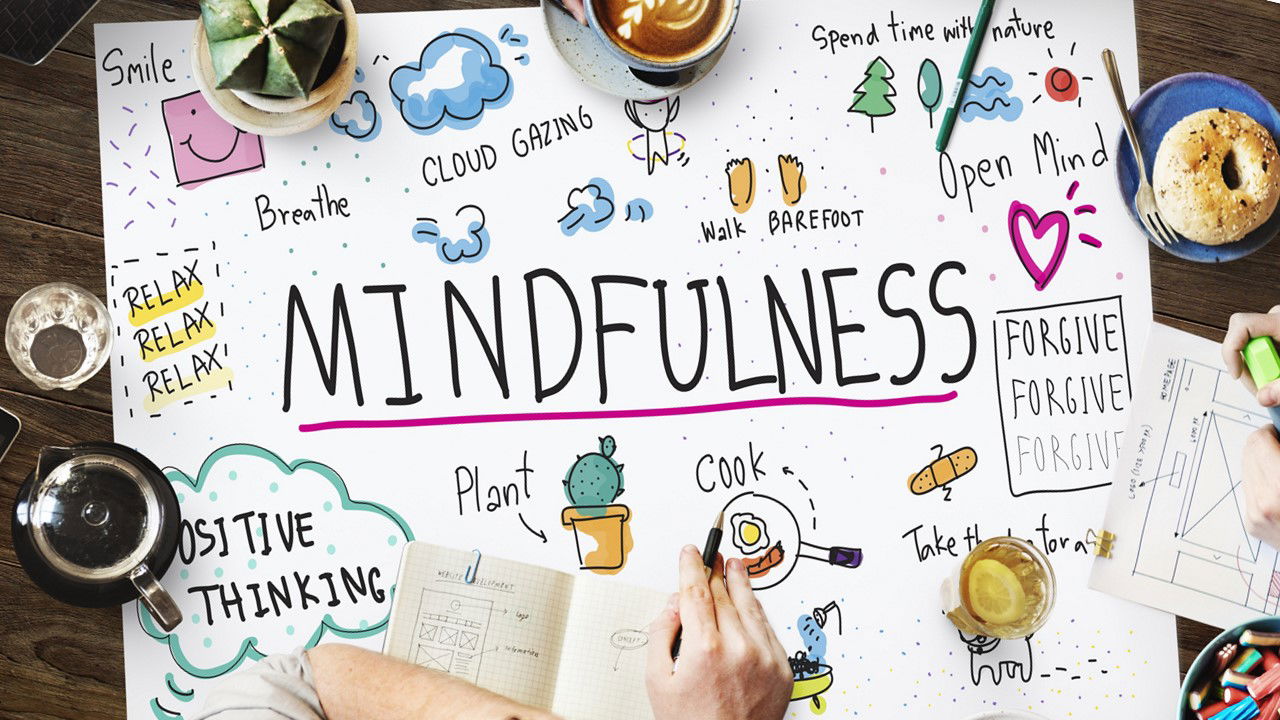Introducing mindfulness to children during Children's Mental Health Week
by Justin Standfield
The theme for 2022’s Children’s Mental Health Week (7-13 February) is ‘Growing Together’. This is about growing emotionally and finding ways to help each other grow. Challenges and setbacks can help us to grow and adapt, and trying new things can help us to move beyond our comfort zone into a new realm of possibility and potential. However, emotional growth is often a gradual process that happens over time and sometimes we might feel a bit ‘stuck’ – on those occasions, mindfulness techniques can be helpful.
When I’m running mindfulness courses and workshops for adults, we usually kick off with a few definitions of what ‘mindfulness’ actually means – this is useful as there are so many misconceptions and myths out there regarding the topic (I’ve heard all sorts ranging from people expecting to engage in yogic flying to those who say “it’s a load of tree-hugging hippie cr*p”). Mindfulness can be defined in simpler, easier-to-understand terms for children and I tend to say that it’s about having a healthier relationship with our thoughts and emotions.
In terms of describing mindfulness meditation to children and young people, you might say to them that it's about paying attention to what's happening in the present moment. You can let them know that it may be what they’re feeling, hearing or anything else they notice. Just as I would with adults, I say to children that there’s no special place of calm we have to reach and it’s not about emptying our mind of all thoughts (a common misconception); it’s just an honest and kind look at what you’re experiencing in this moment.

In my experience I’ve noticed that children find it easy to understand what mindfulness is, based on this definition; they’re also reasonably open to giving it a go in practice, which is great. However, if you’re planning to introduce your child to a bit of basic mindful awareness you still might need to discuss it with them to make sure they have a good grasp on it - especially if they’re young.
It's been said that “mindful children grow into mindful teenagers, mindful adolescents and then into mindful adults”. As mindfulness is being taught in more and more schools here in the UK, I hope that one day in the future a greater proportion of the adult population will be skilled as this proven wellness technique. In fact, many of the benefits of mindfulness for children are the same as those for adults, including:
- Improvements in physical health (e.g. reducing pain, lowering blood pressure, improving symptoms of conditions like psoriasis and fibromyalgia).
- Improvements in mental health (e.g. helping to address substance abuse issues, stress, anxiety and depression, and improving sleep).
- Development in key social and emotional skills (e.g. the ability to feel in control of our lives, to make and maintain meaningful relationships, to accept reality ‘as it is’, to manage difficult feelings and to be calmer, more resilient and more compassionate).
- Increases in intellectual skills (e.g. improved sustained attention, visuospatial memory, working memory and concentration).
However, there are some benefits that are especially relevant to children, including:
- Improved cognitive outcomes (e.g. better attention and focus, improvements in performance at school or hobbies).
- Improved social-emotional skills (e.g. regulation of their emotions, better behaviour in school, higher empathy and perspective-taking, and better social skills).
- Greater wellbeing (e.g. lower levels of anxiety, reduced stress, fewer post-traumatic symptoms and less depression).
As I’ve already mentioned, an effective way to instil mindfulness in children is to start early. In addition to getting started early, I think it’s important to say that the very best way to teach mindfulness to our children is to practise it ourselves and role model it for them (and make it fun!).
In terms of getting started with mindfulness, one of the best techniques for bringing about a calm state is called Square Breaths or ‘box breathing’ as it’s also known; it involves breathing a bit more deeply than we might typically do, which has been shown to help children relax by activating the parasympathetic nervous system. The Square Breaths technique can also help the body cope with stress, ease feelings of panic and worry, and bring more oxygen into the body.
In the following video, I provide a brief overview of mindfulness for children and then show you how to do Square Breaths with your child. It’s incredibly simple yet very effective! Click on the image below to launch the video.
Here are my tips for getting the most out of Square Breaths:
- If four seconds for each side of the square is too much, it’s OK to reduce it two or three seconds to help your child get the hang of it.
- Encourage your child to try saying the numbers in their head if it’s hard for them to find the rhythm at first.
- Finally, make sure they’re comfortable! It’s easier to relax and breathe when our body is in a relaxed and comfortable posture.
For more information about Children’s Mental Health Week 2022, visit the official website - they have a range of resources for families, schools and community groups.
